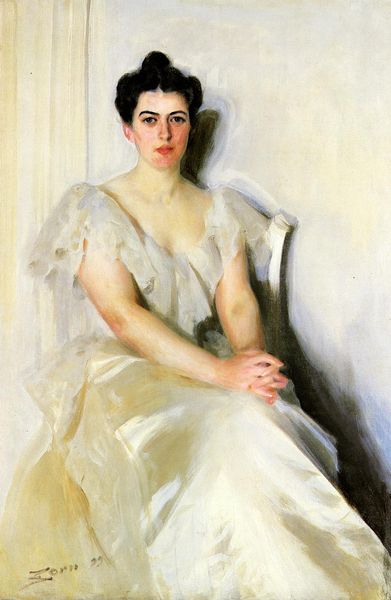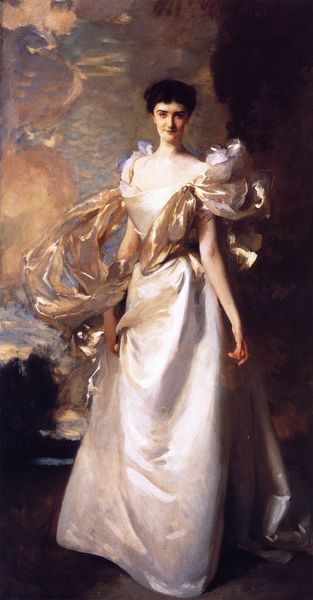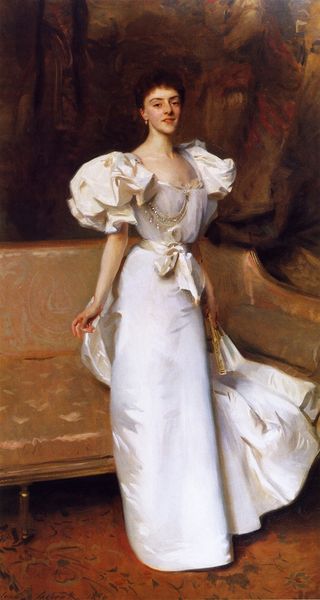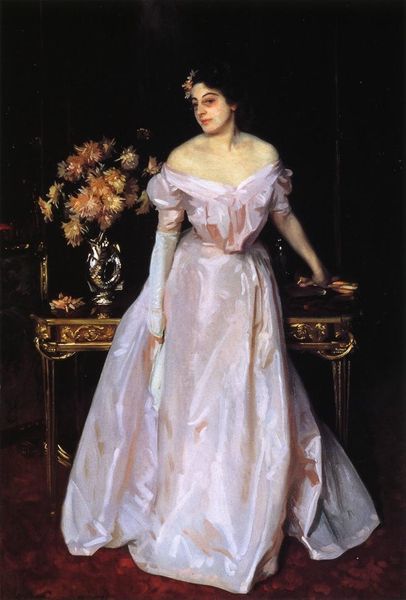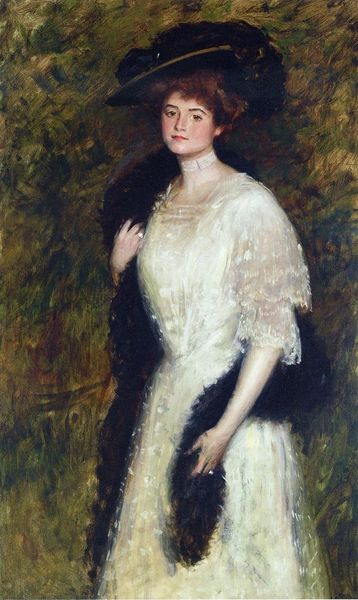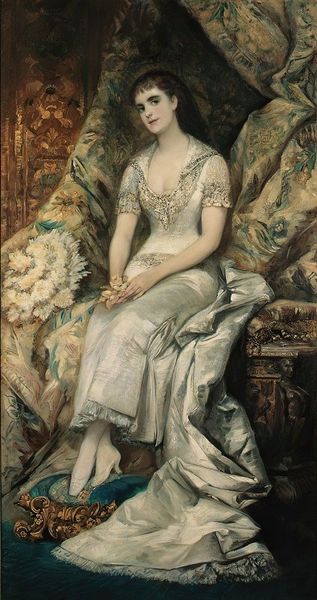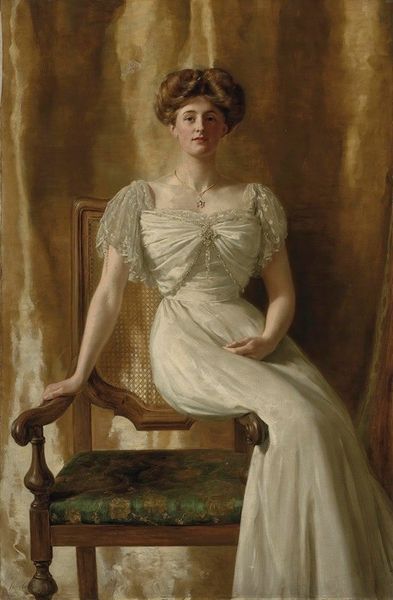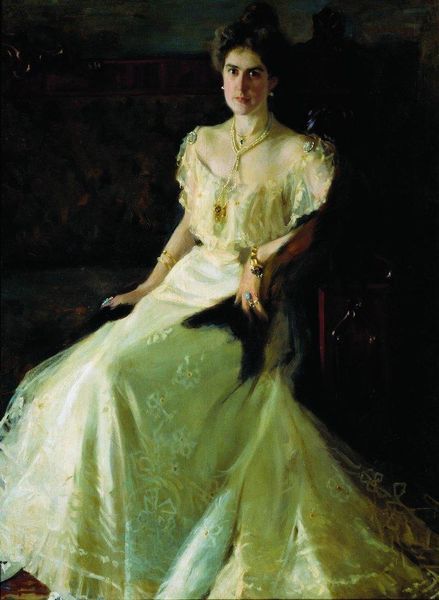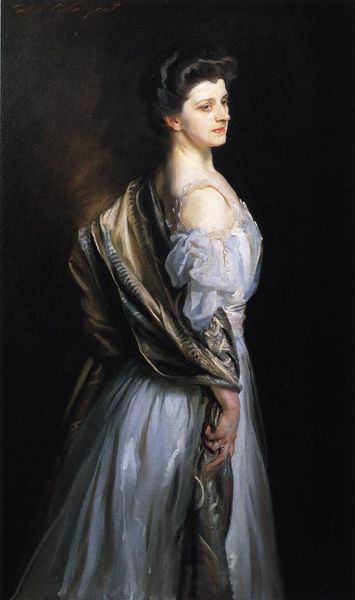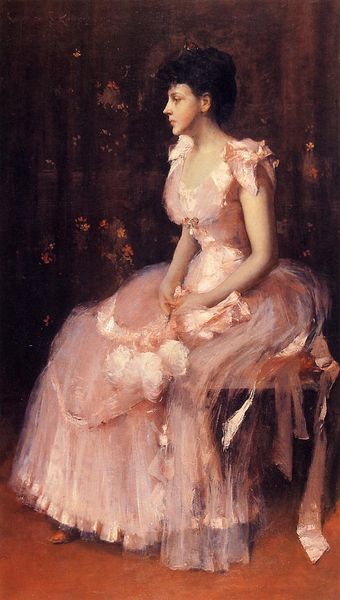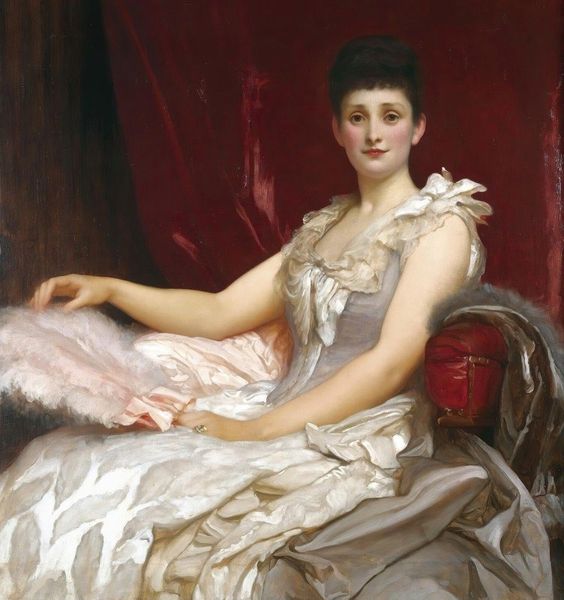
Dimensions: 121.5 x 81.3 cm
Copyright: Public domain
Curator: Standing before us is John Singer Sargent’s 1892 oil painting, “Helen Dunham,” now held in a private collection. Editor: My first impression is one of subdued opulence; the play of light on the satin dress against the deep crimson backdrop is striking. She seems…contemplative, almost melancholy. Curator: Sargent's commissioned portraits were significant in shaping social perceptions. This piece reflects the taste and status of his affluent clientele. I wonder how the institutional politics of portraiture affected how Sargent constructed identity here? Editor: Considering turn-of-the-century gender roles, it's fascinating to examine how Dunham is portrayed. Her poised posture and gentle gaze reflect societal expectations of femininity, a subtle act of power against her silence. But the richness of her dress speaks volumes too about female societal role at the time. It is not the same, but related to our current Kardashian and Hadid phenomenon, would you agree? Curator: Yes, exactly, those portraits often reinforced existing hierarchies, yet simultaneously offered women like Dunham a platform for visibility, albeit one carefully controlled by both artist and social convention. Editor: Absolutely. And speaking of visibility, notice the painterly brushstrokes, a hallmark of Impressionism, contrasting with the rigid academic portraiture, hinting at a challenge to artistic norms. And do the slight impasto areas enhance the emotional quality, infusing it with both grandeur and a subtle unease? Curator: Precisely. Sargent successfully combined tradition with elements of modernism, catering to patrons while also demonstrating his technical skill. It begs the question: How did institutions such as the Paris Salon and the critics shape Sargent’s artistic development? Editor: A fascinating inquiry! By considering these aspects together – artistic technique and the impact of broader social structures – we gain richer perspectives, beyond aesthetics. Curator: Agreed. The painting becomes not just a representation of an individual, but a window into the complex relationship between art, power, and social expectation during a fascinating period. Editor: Precisely. "Helen Dunham" provides a rich avenue for future examination. Curator: It's been quite a thought-provoking experience!
Comments
No comments
Be the first to comment and join the conversation on the ultimate creative platform.

